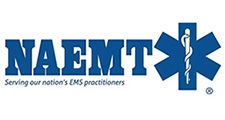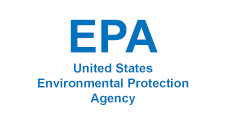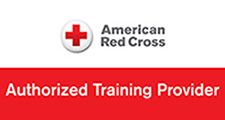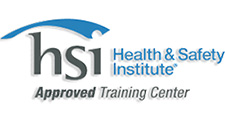Featured
Why NYC’s Volunteer Ambulance Corps Are in Decline
New York City has long relied on the dedication of volunteer ambulance corps to supplement its emergency medical services (EMS) system, especially in outlying neighborhoods and during large-scale incidents.
Yet in recent years, these volunteer organizations have been dwindling in number and capacity. Below, we explore the key factors driving this decline, the impacts on communities, and potential paths forward.
1. Shrinking Volunteer Workforce
- Sharp Drop in Active Responders
Between 2019 and 2022, the number of active certified EMS responders in New York State fell from 40,046 to 33,022 a decline of 17.5%. This loss encompasses both career and volunteer personnel, but volunteer agencies have been disproportionately affected as older members retire and fewer newcomers join.
- Aging Membership & Recruitment Challenges
Many current volunteers are mid‑career or retired professionals. Younger generations face competing demands family, work, education and often lack the time or incentive to complete rigorous EMS training and certification.
2. Funding Shortfalls & Unstable Reimbursement
- Inadequate Insurance Coverage
Volunteer corps rely heavily on fee‑for‑service billing, but insurance often only covers transported patients or reimburses at rates below actual costs. When a patient refuses transport or is ineligible, no payment is made, forcing corps to absorb expenses.
- Spotty Government Support
While some municipalities have used federal stimulus funds (e.g., American Rescue Plan Act) to shore up EMS, these are temporary. Long‑term county and city budgets rarely allocate consistent subsidies for volunteer services, leaving agencies to scramble for grants and donations.
3. Rising Operational and Training Costs
- Expensive Equipment & Maintenance
Modern ambulances, medical supplies, and personal protective equipment (PPE) come with hefty price tags and upkeep requirements. Volunteer corps often operate older vehicles that become costly to maintain and lack the capital to replace them.
- Certification & Recertification Burdens
State regulations mandate regular skills updates, background checks, and continuing education for all EMS providers. While necessary for safety, these requirements demand time and sometimes personal expenses, dissuading volunteers from staying active.
4. Pandemic‑Driven Burnout
- COVID‑19 Surge and Aftermath
During the pandemic’s peak, volunteer corps stepped up, staffing vaccination sites and handling overflow calls. But the relentless pace and exposure to risk led many to experience burnout or health concerns, prompting permanent departures.
- Mental Health Toll
Repeated exposure to traumatic scenes without the support structures available to paid staff can leave volunteers vulnerable to PTSD and compassion fatigue, further accelerating attrition.
5. Competition from Paid Services
- Attractive Paid Roles
Hospitals, private ambulance companies, and municipal EMS agencies have expanded hiring, offering salaries and benefits that volunteer corps cannot match. Many former volunteers transition to these paid positions, exacerbating the volunteer shortage.
- Integration into FDNY Dispatch
FDNY’s 9‑1‑1 system increasingly prioritizes career-staffed units. By December 2023, 19.2% of vehicles in the city’s dispatch network were out of service due to staffing shortages a clear sign volunteer agencies struggle to keep up with demand and integration standards.
6. Liability, Insurance, and Regulatory Pressures
- Escalating Liability Insurance Costs
Malpractice and liability insurance premiums have risen steadily, placing another financial burden on volunteer corps that lack large organizational back‑stops.
- Stringent Regulatory Oversight
Volunteer agencies must comply with the same state and city regulations as paid services, including vehicle inspections, hygiene protocols, and data reporting tasks that require administrative staff many small corps cannot afford.
Community Impacts
- Longer Response Times
As volunteer vehicles go off‑line and agencies shutter, professional EMS units must cover larger territories, delaying aid for non‑critical but still time‑sensitive calls.
- Coverage Gaps in Outer Boroughs
Neighborhoods once served by local volunteers such as parts of Queens or Staten Island now rely solely on citywide FDNY ambulances, stretching resources thin during peaks.
- Reduced Surge Capacity
Volunteer corps historically provided vital backup during mass‑casualty incidents (e.g., storms, fires). Their decline leaves the city more vulnerable when large‑scale emergencies arise.
Potential Solutions
- Stable Funding Streams
Establish dedicated line items in city and county budgets to subsidize volunteer EMS operations year‑round, rather than ad‑hoc grants.
- Incentives for Volunteers
Offer tuition waivers, continuing education credits, or modest stipends to offset training costs and recognize service.
- Collaborative Training Programs
Partner with hospitals and FDNY EMS to co‑host certification courses, reducing logistical burdens on small corps.
- Enhanced Recruitment Campaigns
Launch city‑wide drives targeting high‑school and college students, offering “EMS academies” that funnel trainees directly into volunteer roles.
- Streamlined Regulatory Processes
Explore waivers or tiered compliance schedules for small volunteer agencies, balancing safety with practicality.
Volunteer ambulance corps have been an indispensable part of New York City’s emergency response fabric for over a century. Yet funding instability, personnel shortages, pandemic burnout, and competitive pressures now threaten their survival. Preserving these community‑based services demands coordinated action from municipal funding reforms to creative volunteer incentives. Without such measures, New York risks losing not just ambulances, but the spirit of civic engagement that has long defined its neighborhoods.






